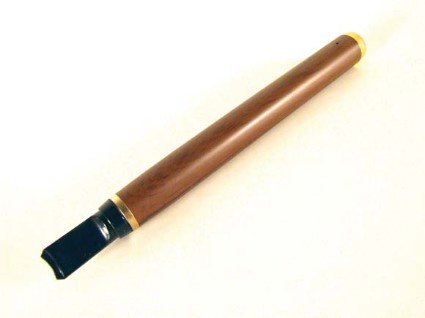User login
ORLANDO – When it comes to popularity and use, e-cigarettes are finding their place in high schools, and some teens believe that the product is safer than other forms of tobacco, according to a survey in an urban North Carolina county, which attempted to get a snapshot of teenagers’ beliefs and attitudes toward this growing trend.
Proponents of e-cigarettes say that the product is safer than tobacco smoking and can be used for smoking cessation, but opponents say that they’re a gateway to nicotine addiction. There are no long-term data on their safety, and it’s still not clear if they’re effective for smoking cessation.
But the use of e-cigarettes has doubled among high school students between 2011 and 2012, wrote Dr. Vivek Anand of East Carolina University, Greenville, N.C., and his colleagues, who presented their unpublished study at the annual meeting of the American Academy of Child and Adolescent Psychiatry.
Researchers surveyed 3,200 high school students in an urban county in North Carolina about the use, knowledge, attitudes, and beliefs about e-cigarettes.
Roughly 85% of the students completed the survey. The mean age was 16.4 years old, the majority (44%) were black, 38% white, and 8.2% Mexican American.
About 15% of the students said they had used e-cigarettes in their lifetime, compared with 25% who had smoked cigarettes, and 13% who used smokeless tobacco. Meanwhile, 7.4% said they had used e-cigarettes during the past 30 days, compared with 15% who had smoked cigarettes, and 10% who had used smokeless tobacco.
Also, friends were the most common source of e-cigarettes (36%), compared with 24% from a tobacco store, 17% from a gas station, and 2% from a pharmacy. Meanwhile, having a family member who used tobacco products was associated with increased risk of using e-cigarettes, while being female, planning to graduate, and not knowing any e-cigarette users had a protective effect.
Significantly more e-cigarette users also found the product to be a safer route of nicotine administration, compared with teens who did not use e-cigarettes (35% v. 3%).
Researchers also found that a majority of respondents weren’t aware of quitting resources available through their high school. “This is alarming, given that e-cigarettes are perceived as healthier than other tobacco products,” Dr. Anand and his colleagues wrote. “E-cigarette users may be trying to stop smoking and could be an important population to target for evidence-based tobacco treatment interventions.”
E-cigarettes, which are powered by batteries, have a sensor that detects airflow and activates a heating element, which then vaporizes a nicotine solution.
Both the World Health Organization and the Food and Drug Administration have said that evidence about the safety of e-cigarettes is lacking, and they’ve encouraged the makers to stop making therapeutic claims. Dozens of states have banned e-cigarette sale to minors, and more are working on posing similar laws.
Dr. Anand and his colleagues said that their survey was the first large-scale study of high school students’ knowledge, attitudes, perceptions, and beliefs about e-cigarettes.
“Identification of subgroups of adolescents at highest risk for e-cigarette use, such as those whose family and friends use tobacco could guide early identification of youth at risk,” they wrote.
Dr. Anand and his colleagues had nothing to disclosure. Their study was funded by the National Institute on Drug Abuse.
ORLANDO – When it comes to popularity and use, e-cigarettes are finding their place in high schools, and some teens believe that the product is safer than other forms of tobacco, according to a survey in an urban North Carolina county, which attempted to get a snapshot of teenagers’ beliefs and attitudes toward this growing trend.
Proponents of e-cigarettes say that the product is safer than tobacco smoking and can be used for smoking cessation, but opponents say that they’re a gateway to nicotine addiction. There are no long-term data on their safety, and it’s still not clear if they’re effective for smoking cessation.
But the use of e-cigarettes has doubled among high school students between 2011 and 2012, wrote Dr. Vivek Anand of East Carolina University, Greenville, N.C., and his colleagues, who presented their unpublished study at the annual meeting of the American Academy of Child and Adolescent Psychiatry.
Researchers surveyed 3,200 high school students in an urban county in North Carolina about the use, knowledge, attitudes, and beliefs about e-cigarettes.
Roughly 85% of the students completed the survey. The mean age was 16.4 years old, the majority (44%) were black, 38% white, and 8.2% Mexican American.
About 15% of the students said they had used e-cigarettes in their lifetime, compared with 25% who had smoked cigarettes, and 13% who used smokeless tobacco. Meanwhile, 7.4% said they had used e-cigarettes during the past 30 days, compared with 15% who had smoked cigarettes, and 10% who had used smokeless tobacco.
Also, friends were the most common source of e-cigarettes (36%), compared with 24% from a tobacco store, 17% from a gas station, and 2% from a pharmacy. Meanwhile, having a family member who used tobacco products was associated with increased risk of using e-cigarettes, while being female, planning to graduate, and not knowing any e-cigarette users had a protective effect.
Significantly more e-cigarette users also found the product to be a safer route of nicotine administration, compared with teens who did not use e-cigarettes (35% v. 3%).
Researchers also found that a majority of respondents weren’t aware of quitting resources available through their high school. “This is alarming, given that e-cigarettes are perceived as healthier than other tobacco products,” Dr. Anand and his colleagues wrote. “E-cigarette users may be trying to stop smoking and could be an important population to target for evidence-based tobacco treatment interventions.”
E-cigarettes, which are powered by batteries, have a sensor that detects airflow and activates a heating element, which then vaporizes a nicotine solution.
Both the World Health Organization and the Food and Drug Administration have said that evidence about the safety of e-cigarettes is lacking, and they’ve encouraged the makers to stop making therapeutic claims. Dozens of states have banned e-cigarette sale to minors, and more are working on posing similar laws.
Dr. Anand and his colleagues said that their survey was the first large-scale study of high school students’ knowledge, attitudes, perceptions, and beliefs about e-cigarettes.
“Identification of subgroups of adolescents at highest risk for e-cigarette use, such as those whose family and friends use tobacco could guide early identification of youth at risk,” they wrote.
Dr. Anand and his colleagues had nothing to disclosure. Their study was funded by the National Institute on Drug Abuse.
ORLANDO – When it comes to popularity and use, e-cigarettes are finding their place in high schools, and some teens believe that the product is safer than other forms of tobacco, according to a survey in an urban North Carolina county, which attempted to get a snapshot of teenagers’ beliefs and attitudes toward this growing trend.
Proponents of e-cigarettes say that the product is safer than tobacco smoking and can be used for smoking cessation, but opponents say that they’re a gateway to nicotine addiction. There are no long-term data on their safety, and it’s still not clear if they’re effective for smoking cessation.
But the use of e-cigarettes has doubled among high school students between 2011 and 2012, wrote Dr. Vivek Anand of East Carolina University, Greenville, N.C., and his colleagues, who presented their unpublished study at the annual meeting of the American Academy of Child and Adolescent Psychiatry.
Researchers surveyed 3,200 high school students in an urban county in North Carolina about the use, knowledge, attitudes, and beliefs about e-cigarettes.
Roughly 85% of the students completed the survey. The mean age was 16.4 years old, the majority (44%) were black, 38% white, and 8.2% Mexican American.
About 15% of the students said they had used e-cigarettes in their lifetime, compared with 25% who had smoked cigarettes, and 13% who used smokeless tobacco. Meanwhile, 7.4% said they had used e-cigarettes during the past 30 days, compared with 15% who had smoked cigarettes, and 10% who had used smokeless tobacco.
Also, friends were the most common source of e-cigarettes (36%), compared with 24% from a tobacco store, 17% from a gas station, and 2% from a pharmacy. Meanwhile, having a family member who used tobacco products was associated with increased risk of using e-cigarettes, while being female, planning to graduate, and not knowing any e-cigarette users had a protective effect.
Significantly more e-cigarette users also found the product to be a safer route of nicotine administration, compared with teens who did not use e-cigarettes (35% v. 3%).
Researchers also found that a majority of respondents weren’t aware of quitting resources available through their high school. “This is alarming, given that e-cigarettes are perceived as healthier than other tobacco products,” Dr. Anand and his colleagues wrote. “E-cigarette users may be trying to stop smoking and could be an important population to target for evidence-based tobacco treatment interventions.”
E-cigarettes, which are powered by batteries, have a sensor that detects airflow and activates a heating element, which then vaporizes a nicotine solution.
Both the World Health Organization and the Food and Drug Administration have said that evidence about the safety of e-cigarettes is lacking, and they’ve encouraged the makers to stop making therapeutic claims. Dozens of states have banned e-cigarette sale to minors, and more are working on posing similar laws.
Dr. Anand and his colleagues said that their survey was the first large-scale study of high school students’ knowledge, attitudes, perceptions, and beliefs about e-cigarettes.
“Identification of subgroups of adolescents at highest risk for e-cigarette use, such as those whose family and friends use tobacco could guide early identification of youth at risk,” they wrote.
Dr. Anand and his colleagues had nothing to disclosure. Their study was funded by the National Institute on Drug Abuse.
AT THE AACAP ANNUAL MEETING
Major finding: Thirty-five percent of e-cigarette users said the product was a safer route of nicotine administration, compared with 3% of teens who did not use e-cigarettes (P less than .05).
Data source: Survey of 3,200 high-school students in an urban county in North Carolina.
Disclosures: Dr. Anand and colleagues had nothing to disclosure. Their study was funded by the National Institute on Drug Abuse.

